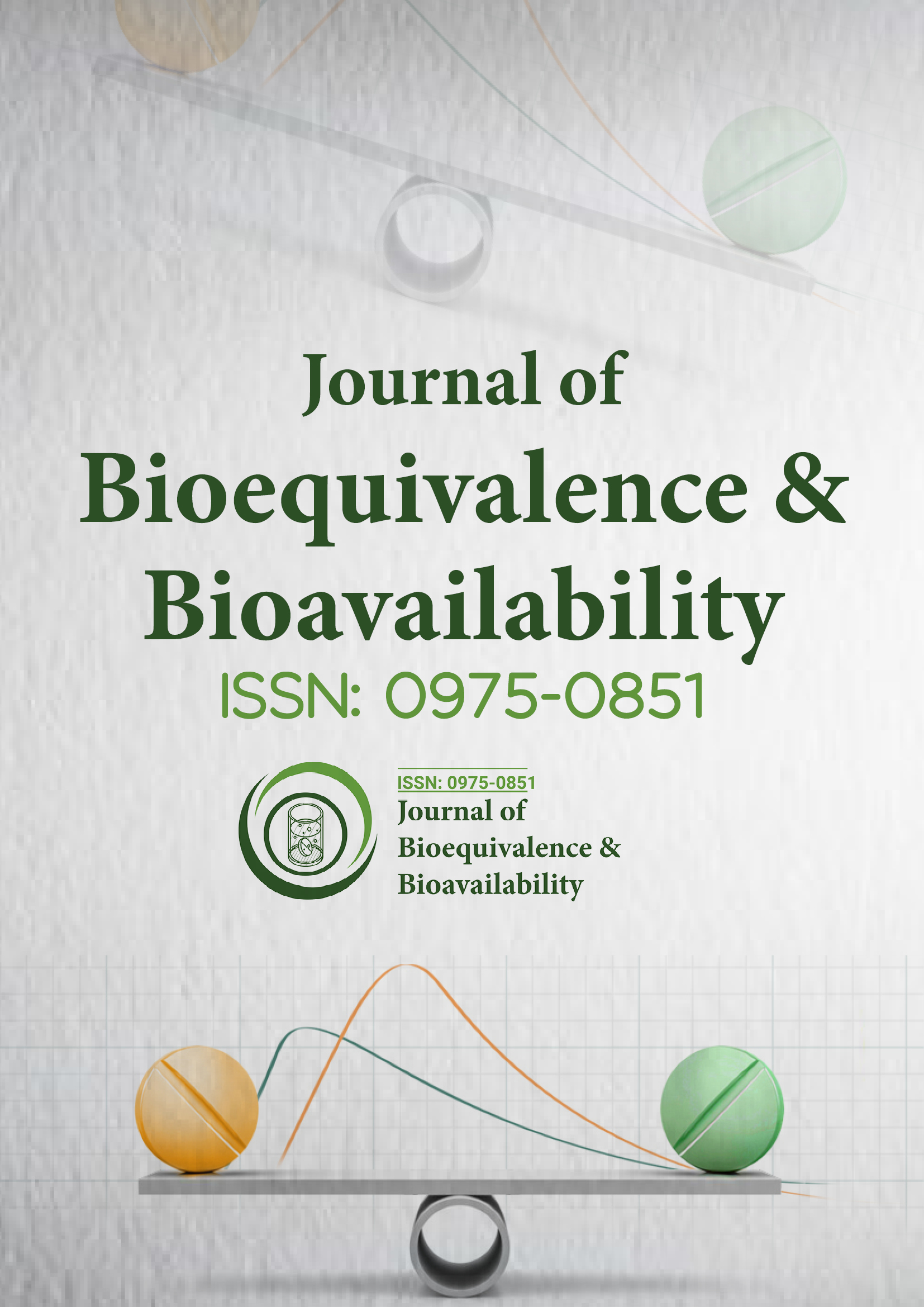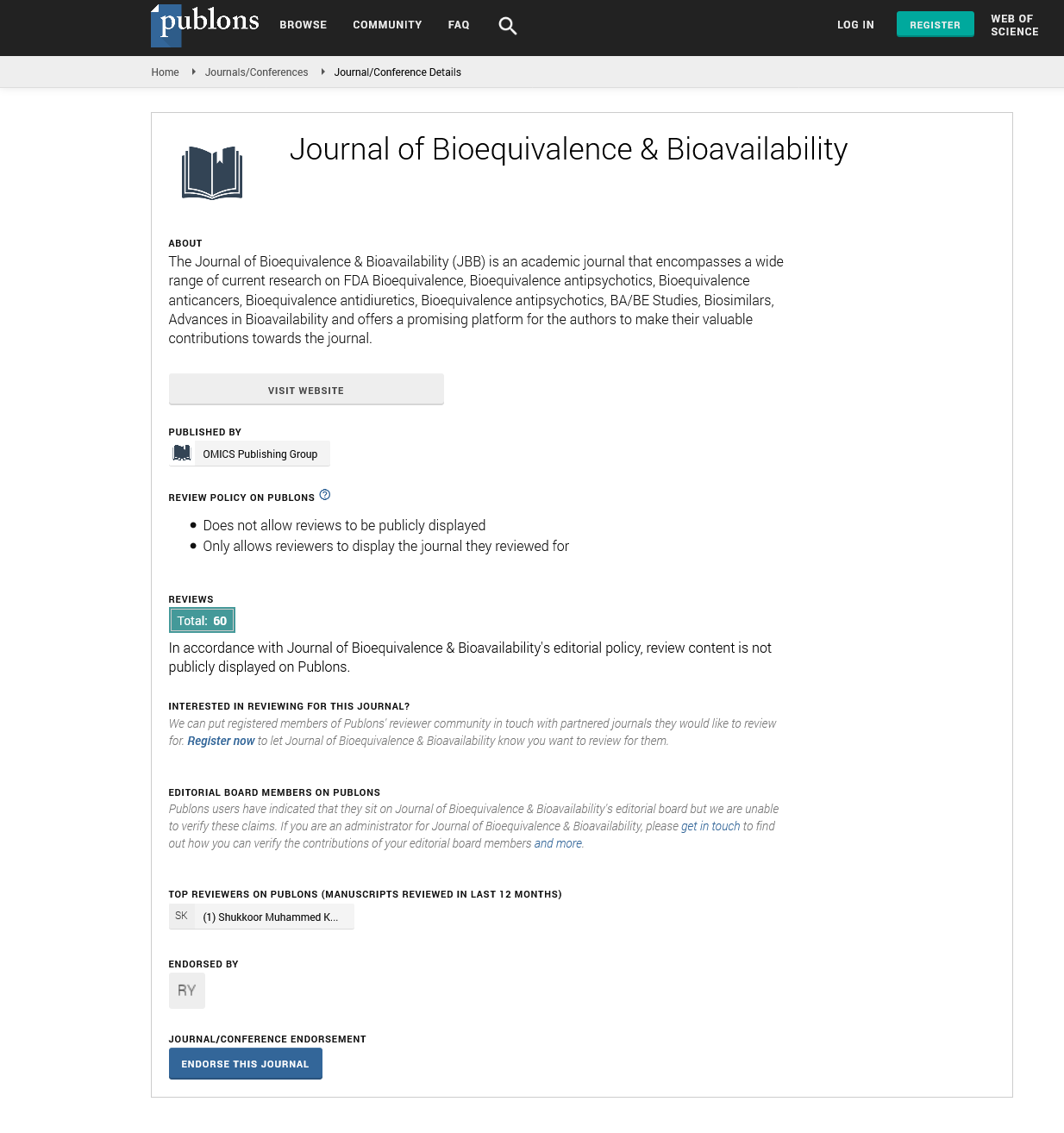PMC/PubMed Indexed Articles
Indexed In
- Academic Journals Database
- Open J Gate
- Genamics JournalSeek
- Academic Keys
- JournalTOCs
- China National Knowledge Infrastructure (CNKI)
- CiteFactor
- Scimago
- Ulrich's Periodicals Directory
- Electronic Journals Library
- RefSeek
- Hamdard University
- EBSCO A-Z
- OCLC- WorldCat
- SWB online catalog
- Virtual Library of Biology (vifabio)
- Publons
- MIAR
- University Grants Commission
- Geneva Foundation for Medical Education and Research
- Euro Pub
- Google Scholar
Useful Links
Share This Page
Journal Flyer

Open Access Journals
- Agri and Aquaculture
- Biochemistry
- Bioinformatics & Systems Biology
- Business & Management
- Chemistry
- Clinical Sciences
- Engineering
- Food & Nutrition
- General Science
- Genetics & Molecular Biology
- Immunology & Microbiology
- Medical Sciences
- Neuroscience & Psychology
- Nursing & Health Care
- Pharmaceutical Sciences
Editorial - (2021) Volume 0, Issue 0
A Note of Bio Equivalence Demonstration
Arjun Arumugam*Received: 01-Dec-2021 Published: 22-Dec-2021
Description
A list of therapeutic features, Pharmacokinetics, and Physicochemical is compiled to distinguish which product requires Bio Equivalence exposure by in vivo testing. A large number of drugs are listed in this category. All enteric dosage forms combined and controlled for any solid oral dosage form require in vivo Bio Availability testing. It is generally suggested if an intra-batch or batch-to-batch variation of more than 25% in Bio Availability is detected, in vivo testing will be required for certification. Any changes in the production process, including product construction or volume modification, other than those proposed in the New Drug Application or Abbreviated New Drug Application and changes to label a new index or new type of capacity are also required in vivo Bio Availability testing.
The pharmacotherapeutic nature of the drug plays an important role in the regulation related to its Bio Availability. Drugs that show a small therapeutic indication, i.e., a difference less than twice the lethal dose and average effective dose values (or less than twice the difference in low active concentration and low blood toxicity), require careful Bio Availability indication and compliance with this requirement. Further consideration is needed for the type of adverse effects that occur when a toxic level is reached. For example, the therapeutic index of salicylates is lower than cardiac glycosides; does not mean that cardiac glycosides are less toxic. It simply means that the concentration of salicylates in a therapeutic response is close to concentrating where the undesirable side effects begin to emerge. Another consideration for this same line is the potency of the drug in question.
Generally, more potent drugs will require greater control of Bio Availability than less potent ones. Due to the logarithmic nature of the response, curves become flat at low and high volumes. Therefore, the more potent drug used in larger doses will show less variability in response due to the Bio Availability factor than the less potent drug used at the dose level when the response is log-linear. Any such comparison, however, should take into account the relative type of response slope in the volume. The physicochemical evidence required for the development of Bio Equivalence, includes low-soluble Bio Equivalence, eg, 5 mg/ mL, or if digestion is essential for absorption, the volume of fluid required to disperse the recommended volume (content of gastric juice is estimated to be 100 ml of human adults and is divided into infants and children). Dissolution rates are also considered if less than 50% of the drug dissolves within 30 minutes using official methods.
Also included under the physicochemical evidence is the particle size and surface area of the active ingredient. Certain features of the body structure of the active ingredient of the drug, e.g., polymorphism, solvation, etc., are also considered. Drug products with a high concentration of active ingredients in active ingredients may also be subject to bioequivalence exposure. Other evidence includes specific suction sites or where the available volume is less than 50% of the controlled dose. Drugs that are rapidly converted into biotransform in the intestinal wall or liver during absorption, as well as loose drugs in certain parts of the Gastrointestinal Tract (GT) that require special lubrication or formation are also subject to bioequivalence requirements, such as dosage-dependent drugs, distribution, biotransformation, or termination. In some dosage forms, bioequivalence requirements may be waived as topical products, non-target oral dosage forms, inhalations, and solutions if there is sufficient evidence that ineffective ingredients do not affect the release and delivery of the drug in dosage form.
Citation: Arumugam A (2021) A Note of Bio Equivalence Demonstration. J Bioequiv Availab. S6:e002.
Copyright: © 2021 Arumugam A. This is an open-access article distributed under the terms of the Creative Commons Attribution License, which permits unrestricted use, distribution, and reproduction in any medium, provided the original author and source are credited.

